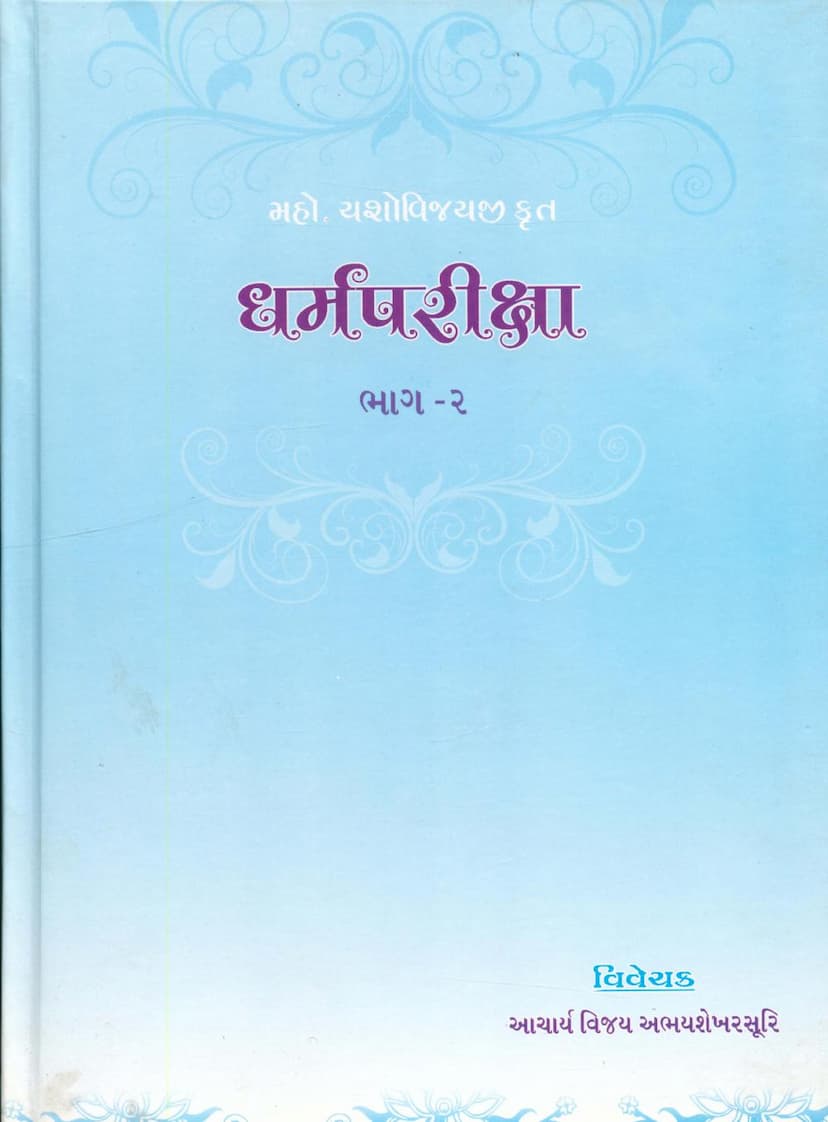Dharm Pariksha Part 02
Added to library: September 1, 2025

Summary
Dharm Pariksha Part 02: A Comprehensive Summary
This document is a summary of "Dharm Pariksha Part 02," authored by Yashovijay Maharaj and commented on by Acharya Vijay Abhayasekhar Suri, published by Divyadarshan Trust. The catalog link is https://jainqq.org/explore/022193/1.
Key Focus:
The primary objective of this work, as indicated by its title and content, is to critically examine and elucidate various aspects of Jain Dharma, particularly focusing on the conduct and nature of Kevali (omniscient beings) and the adherence to Jain principles. It delves into complex theological and philosophical concepts, aiming to clarify potential misunderstand10s and guide practitioners.
Core Themes and Discussions:
The text thoroughly analyzes the concept of "himsa" (violence) in Jainism, especially in relation to Kevalis and ascetics. It engages in a rigorous debate, often presenting counter-arguments (purva paksha) and refutations (uttar paksha), to establish the accurate understanding of Jain doctrines.
Key Areas Explored (based on the table of contents and chapter headings):
- The Nature of Kevalis: The book explores whether Kevalis can be considered to cause "himsa" (violence) and discusses concepts like "dravya himsa" (violence in substance) and "bhava himsa" (violence in intention). It clarifies the nature of their actions and their relation to himsa.
- Kevali's Efforts: It examines the efforts of Kevalis in protecting life and whether these efforts can be considered futile or successful. The text differentiates between the success of efforts based on achievable goals.
- The Concept of Himsa: The book deeply analyzes what constitutes "himsa" – whether it's the substance or the intention. It discusses the implications of "pratisheva" (following prohibited actions) and its relation to Kevalis and ascetics.
- The Role of Yogic Practices: It delves into the nature of "yog" (actions, thoughts, and speech) and how they can be considered auspicious or inauspicious. The text discusses how Kevalis' yogas are not associated with himsa.
- The Concept of "Aparigraha" (Non-possession) and "Avashyabhavi" (Inevitable): The book discusses the concept of "aparigraha" and the idea of inevitable violence that might occur in the world, analyzing the efforts of ascetics and Kevalis in relation to these concepts.
- The Significance of "Aboha" (Understanding/Consciousness): It explores the role of "aboha" in the context of himsa and liberation, distinguishing between intentional and unintentional violence.
- The Distinction between Kevali and Chhadmastha: A significant portion of the text is dedicated to differentiating the characteristics and actions of Kevalis and chhadmasthas (those with remaining karmic obstructions). This includes discussions on their external manifestations ("linga") and their adherence to vows.
- The Authority of Jain Scripture: The text consistently refers to and interprets Jain scriptures (agamas) to support its arguments, emphasizing the importance of following the divine injunctions ("jinagya").
- The Nature of "Apavada" (Exceptions) and "Utsarga" (General Rules): It elaborates on how exceptions to general rules are prescribed and the underlying principles behind them.
- The Role of "Abhyasa" (Practice) and "Adhyatma" (Inner Self): The book highlights the importance of consistent spiritual practice and self-realization in overcoming obstacles and achieving liberation.
Methodology:
The authors engage in detailed philosophical and logical analysis, often presenting multifaceted arguments and counter-arguments to arrive at a refined understanding of Jain principles. They consistently draw upon a deep knowledge of Jain scriptures and commentaries.
Overall Significance:
"Dharm Pariksha Part 02" serves as a profound exploration of fundamental Jain principles. It aims to provide clarity on nuanced theological concepts, particularly concerning the nature of himsa and the spiritual states of Kevalis and ascetics. The text emphasizes the importance of righteous conduct, adherence to scripture, and the ultimate goal of liberation from the cycle of birth and death. It is a valuable resource for those seeking a deeper understanding of Jain philosophy and practice.